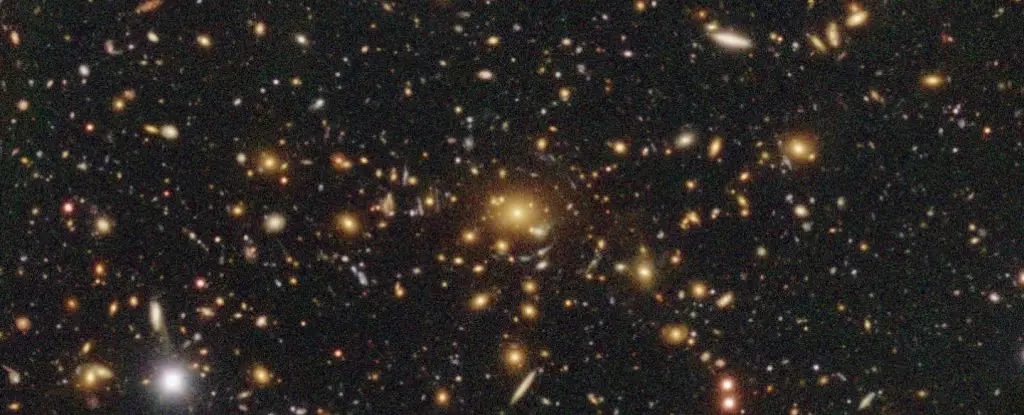The nature of dark matter, that enigmatic substance that makes up a significant portion of the universe, seems to have become even more perplexing. Recent observations of the more recent universe suggest that the distribution of dark matter has changed compared to its early spread after the Big Bang. It appears to be less clumpy now, raising questions about our current understanding of the universe and the standard cosmological model. This revelation, known as the sigma-eight (S8) tension, has been documented in a series of studies in Physical Review D, adding to the growing body of evidence indicating a fundamental mistake in our knowledge.
Astrophysicist Michael Strauss of Princeton University admits that caution is necessary in drawing definitive conclusions. However, the statistics reveal a compelling argument, indicating a mere one in 20 chance that the discrepancy is merely due to chance. As multiple experiments confirm these findings, it becomes increasingly likely that we are facing a remarkable revelation about the nature of our universe. This discrepancy arises from studying various light datasets from the distant universe, which provide insights into the distribution of dark matter.
Two sets of data are particularly relevant in this investigation. The first is the cosmic microwave background (CMB), a faint background of microwave light that permeates the universe. This radiation originates from the initial glow that streamed through the universe a few hundred thousand years after the Big Bang. The second dataset consists of six years of observations from the Hyper Suprime-Cam (HSC) instrument, which employs weak gravitational lensing surveys. Since dark matter cannot be directly observed, researchers rely on its gravitational influence to detect and map its distribution. By carefully analyzing and measuring the distortions caused by dark matter, astronomers can unveil its clumpiness on incredibly precise scales.
The HSC survey, conducted over six years, involved observing the sky for a total of 330 nights. Different teams analyzed the collected data using various approaches, consistently returning S8 values for the clumpiness of dark matter. These values ranged between 0.763 and 0.776, aligning with findings from other weak lensing surveys. However, the value obtained from the CMB was significantly higher at 0.832. This discrepancy challenges our current understanding of the universe’s progression, as the standard model predicts that matter distribution should have gradually become clumpier over time. Multiple instruments and analyses have produced similar weak lensing results, making errors unlikely to explain the contradiction.
Researchers took extensive measures to eliminate bias and ensure objective analysis of the data. Despite their efforts, the perplexing findings remain. The scientific community now faces several cosmological tensions, including the Hubble tension, an unresolved discrepancy in measuring the expansion acceleration of the universe. The existence of multiple tensions suggests that there might be an inherent flaw in our cosmological models or current understanding of dark matter. Alternatively, inaccuracies in measurement methods cannot be ruled out. Addressing one tension may ultimately provide answers to others. However, it is clear that our current understanding of the universe’s evolution is incomplete, and a fundamental piece of the puzzle seems to be missing.
To unravel the mystery of dark matter and resolve these conflicts, future advancements in instrumentation are necessary. More powerful tools will facilitate larger surveys and even more accurate measurements. Only through these efforts will we begin to uncover answers to these fascinating and perplexing cosmological problems. Continued research and exploration are our best chances at gaining a deeper understanding of the nature of the universe we inhabit.
The research discussed in this article is detailed in five separate papers published in Physical Review D, which can be accessed here: [links to the papers].


Leave a Reply